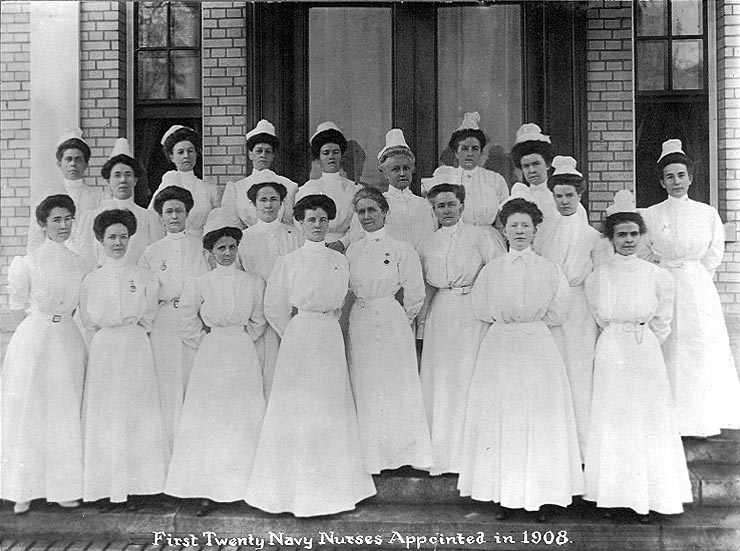 The stereotypical nurse is the one with the perfectly starched white apron, dainty little white hat, white socks and white rubber shoes. Notice how “white” is the recurring theme. While this quintessential, iconic image may still linger at the forefront of your mind, the fact is that nursing uniforms have taken quite a journey since its standard 19th century representation.
The stereotypical nurse is the one with the perfectly starched white apron, dainty little white hat, white socks and white rubber shoes. Notice how “white” is the recurring theme. While this quintessential, iconic image may still linger at the forefront of your mind, the fact is that nursing uniforms have taken quite a journey since its standard 19th century representation.
19th Century
The nurses of the 19th century were not given the respect they garner today. Clad in typical servants’ uniforms, a black gown with a white cap and pristine white apron, these nurses were considered to have a mere street profession. It wasn’t until the 1840’s that nursing as a specialized profession gained some respect. The nurses now started to receive training and shed their servant attire for ladylike gowns with white aprons and caps to indicate that they were nurses. This is when the stark white cap became tantamount to the nursing profession.
Florence Nightingale is credited with taking things a step farther and paving the way for nurses to be recognized as the superiors which they are. Thanks to her, nursing became a reputable line of work. Nightingale instituted a school system and real uniforms were established. Nurses were now distinguished by a hat and band which displayed their rankings. Nurses fresh out of school wore pastel colored bands, while senior nurses, as well as nursing teachers, wore black bands.
20th Century
Once the 1900s rolled around, nursing uniforms became noticeably different from the servant uniforms they used to resemble. They now featured a button down top with pointy collar, a white bib and apron, and pockets for holding all the little things a nurse may need. They also began to wear large hats reminiscent of a nun’s high hat, if only to borrow an added measure of respectability.
WWI saw the nursing uniforms redesigned once again, as functionality became key. Shirts were shortened, aprons removed and sleeves rolled up, all for the effortless movement needed on the battlefield. The 1950s saw the large, crown like caps worn during WWI replaced with comfortable and simpler paper hats, and the practice of using hats to connote status was dropped. Dresses also became less fitted as no one had the time to tend to intricately tailored gowns. Best of all, these new uniforms were a pleasure to wash, iron, and of course wear.
By the late 1970s, the nursing hat which came to define nurses for so long became obsolete, and male nurses began to wear cheaper nursing scrubs which quickly became the latest fashion craze. These scrubs came close enough to casual, regular clothing and nurses came to really appreciate them.
Today
In today’s hospitals, all medical staff wear nursing scrubs for hygienic purposes and the only thing differentiating a nurse from a doctor, or even other staff for that matter, is a name tag. At times medical centers will mandate certain colors or patterns for the medical scrubs worn by nurses and doctors. That aside, nursing scrubs generally resemble typical drawstring pants and v-neck t-shirts. They’re available in so many styles and colors these days, it’s literally like shopping for your average top or pair of pants. So go all out and have fun with your uniform!

